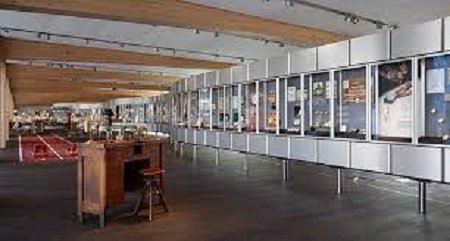Exhibit at the Swiss Watch Museum. This month, the Musée International d’Horlogerie in La Chaux-de-Fonds, Switzerland’s Watch Valley, will add a steel block to its collection.
Untrained eyes may mistake the block for a minimalist artwork, an archaeological find, or a polished meteorite.
Raphael Broye, proprietor of Panatere, a watch component maker and steel recycling firm situated in neighbouring Saignelégier, claims it is the world’s first block of recycled steel consisting completely of chips gathered right here in the Watch Valley and melted down using solar energy.
“A major progression in a new era of recyclable materials used in watchmaking,” says Nathalie Marielloni, the museum’s assistant curator.
The chips were collected from Panatere and 40 other enterprises within a 50-kilometer (30-mile) radius of Saignelégier, then melted at a solar-powered furnace in Mont Louis, southern France.
In one experiment, Mr. Broye stated, solar power was used to melt steel.
Panatere wants to build a solar furnace in the Watch Valley in September, which it developed in partnership with the Swiss Federal Institute of Technology in Lausanne. As Mr. Broye put it, “it will be the world’s first solar-powered industrial furnace capable of melting steel.”
The furnace, which would be 9.5 metres high and 15 metres wide, would use mirrors to focus sunlight onto a small area known as the receiver, producing heat up to 7,230 degrees Fahrenheit (4,000 degrees Celsius). Steel, consisting of carbon and iron, melts at 2,730°F (1,500°C). The same goes for stainless steel, which contains chromium, nickel, manganese, and copper.
“Few people comprehend the potential of concentrated solar energy,” Mr. Broye said, adding that it can melt 1.5 cm of steel in three seconds.
In addition to building a model of a circular economy, the solar furnace will assist Mr. Broye achieve another goal: collecting waste and recycling it all within a small geographic area. “We want to reverse globalisation,” he stated.
While Swiss watch makers generally tout their goods’ longevity and clean kinetic energy, the industry as a whole hasn’t been very eco-friendly. In 2018, the World Wildlife Fund’s Swiss watch office examined 15 major watch makers’ “environmental stewardship” and determined that better management was required.
Significant gaps exist in the procurement and usage of sustainably sourced raw materials, the development of forward-thinking strategic and goal objectives, and more industry openness, the research stated.
Now, watchmakers like Panerai, which released the Submersible eLAB-ID in April, advertise their utilisation of recyclable materials.
Panatere has also been working on a trial project with ID Genève, a 2020 watch company. It produced recycled stainless steel casings for the brand’s Circular 1 model, which incorporated biodegradable straps and packaging.
Although Mr. Broye highlighted that the luxury sectors utilise very little steel, he said two significant watchmaking organisations had expressed interest.
200,000 watches require 50 tonnes of stainless steel. “A regular industrial furnace would create that quantity in 14 minutes.”
Mr. Broye, a mechanical engineer, bought Panatere, a Swiss watch supplier, a decade ago. It presently employs 40 staff.
The company’s steel supply issues led to the concept of manufacturing recycled steel domestically. “The steel we were buying was imported from Shenzhen, an industrial city in southern China,” Mr. Broye added.
Also, shavings were shipped back to China for recycling, meaning the steel used had to travel many times. “No sense.”
Steel sport watches have been in vogue for a while. In 2020, Switzerland shipped 13,780 million watches, of which 8,442 million were steel.
Metal ingots or bars are 3 metre long and are machined into smaller pieces which are then chopped, polished and shaped into watch casings, bracelets or buckles.
Mr. Broye and his local colleagues now put waste into recycling containers, “like you would separate cartons, papers, and plastics.”
Panatere received 50 tonnes of recycled steel in 2019 from a typical furnace in France. It wants to double output with the new solar furnace.
“We tested this recycled component for performance, anti-allergenic qualities, and biocompatibility,” he stated. ”It’s eternally recyclable, shines brilliantly in polishing, and performs flawlessly.”
As a result of Swiss government subsidies, Panatere believes it can now offer its solar-recycled steel at competitive pricing.
In October, Panatere won the Luxury Innovation Awards in Geneva, held by the Luxury Venture Business, a Swiss incubator and venture capital investor for luxury start-ups, in collaboration with Porsche and the Vontobel banking and financial group.
Panatere reported on Dec. 1 that it has produced 200 kg of 100% recycled and recyclable Grade 5 titanium (in a regular steel furnace, not a solar one).
In Birkenstocks and wool sweaters, Mr. Broye said. “We aim to produce locally, sustainably, and profitably.”








